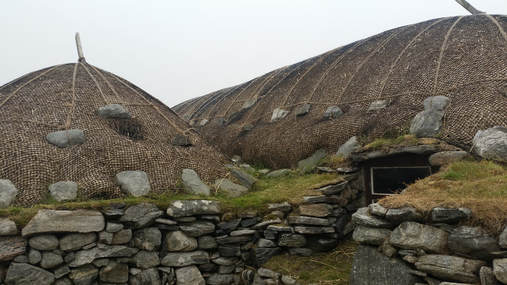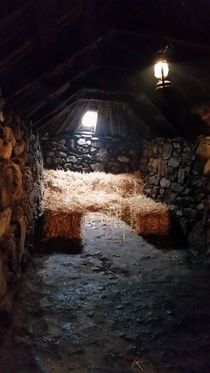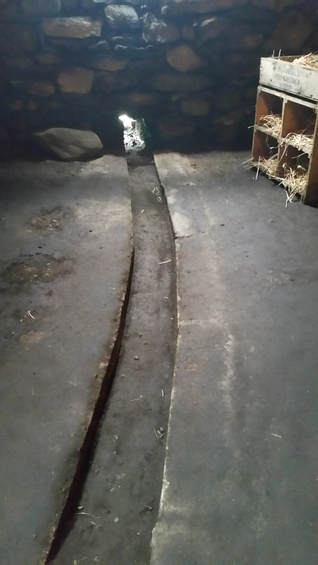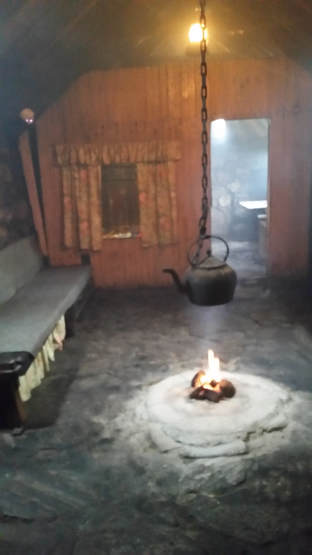
The black houses were the main form of accommodation in the 1800's when the chess pieces were found. Rectangular in shape, the interior being ten feet wide, they were built on a slope with the lower end allocated to stock. The walls were often two layers and filled with straw for insulation. The doors were small to minimise heat loss.
The roofing was made of heather and straw and covered with net - often scavenged fishing net, and weighed down with stones.
The roofing was made of heather and straw and covered with net - often scavenged fishing net, and weighed down with stones.

Left: The floor of the back houses were covered with stones collected from nearby beaches. Windows were small if they existed at all.
Below left: A drainage channel was dug into the floor of the byre end of the house to allow the removal of excrement cattle, chickens and humans. The manure was used on the garden. Small chicken coops were assembles from materials washed up on the beach. The factor however had first claim on any scavenged material and families were heavily fines if found with material not approved by the factor,
Below right: A small peat fire would warm the black houses. There was no chimney and the tar from the smoke would help seal the ceiling. Small cupboard like rooms. as seen below in the background with a curtain (a luxury in the early 1800's), were the sleeping quarters. Families slept three or four to a "cupboard". Unlike the upholstered bench seen below, seating in the early 1800's was usually a three legged stool, often only one or two per house due to the shortage of wood on the island.
Below left: A drainage channel was dug into the floor of the byre end of the house to allow the removal of excrement cattle, chickens and humans. The manure was used on the garden. Small chicken coops were assembles from materials washed up on the beach. The factor however had first claim on any scavenged material and families were heavily fines if found with material not approved by the factor,
Below right: A small peat fire would warm the black houses. There was no chimney and the tar from the smoke would help seal the ceiling. Small cupboard like rooms. as seen below in the background with a curtain (a luxury in the early 1800's), were the sleeping quarters. Families slept three or four to a "cupboard". Unlike the upholstered bench seen below, seating in the early 1800's was usually a three legged stool, often only one or two per house due to the shortage of wood on the island.
Proudly powered by Weebly

